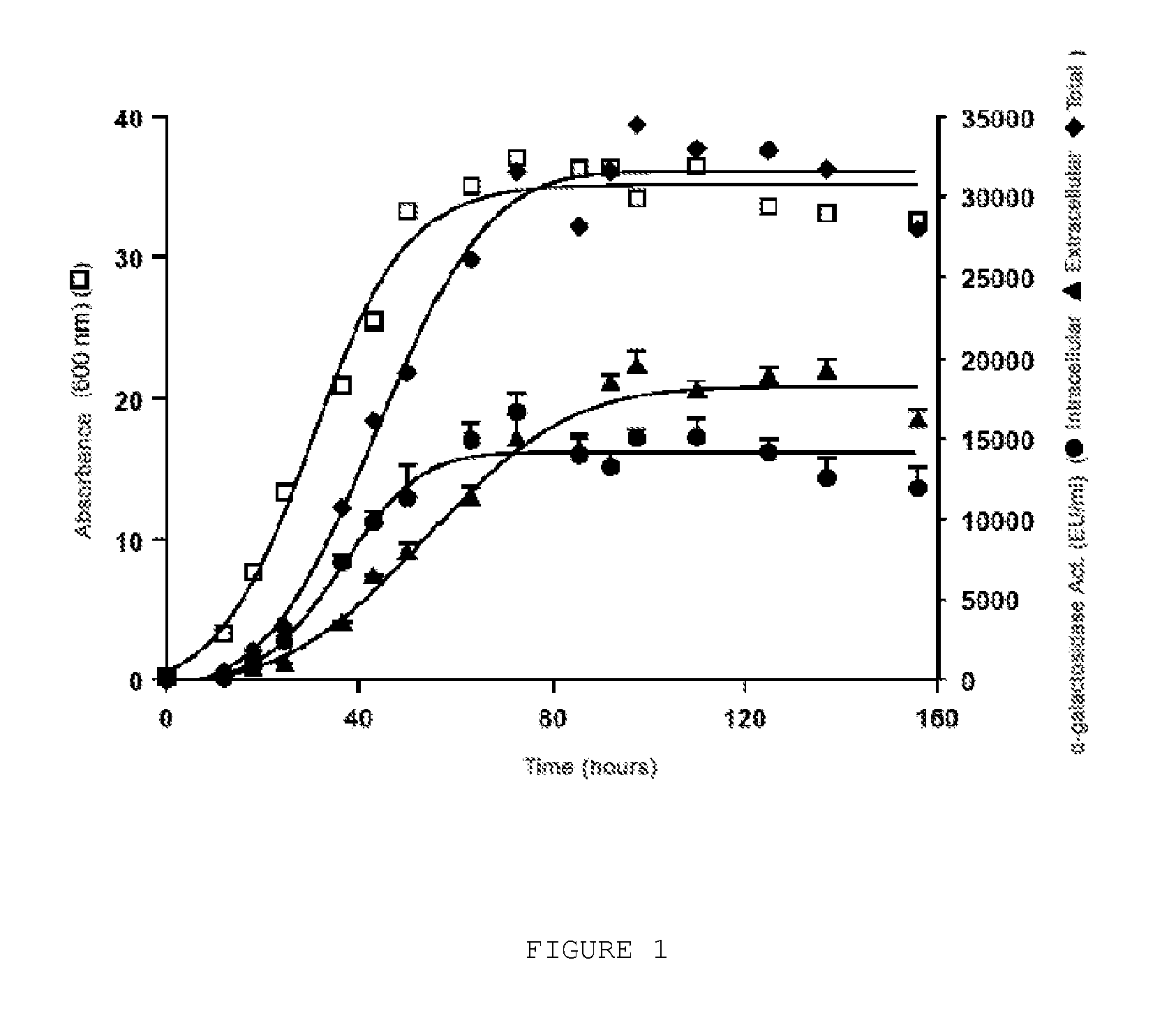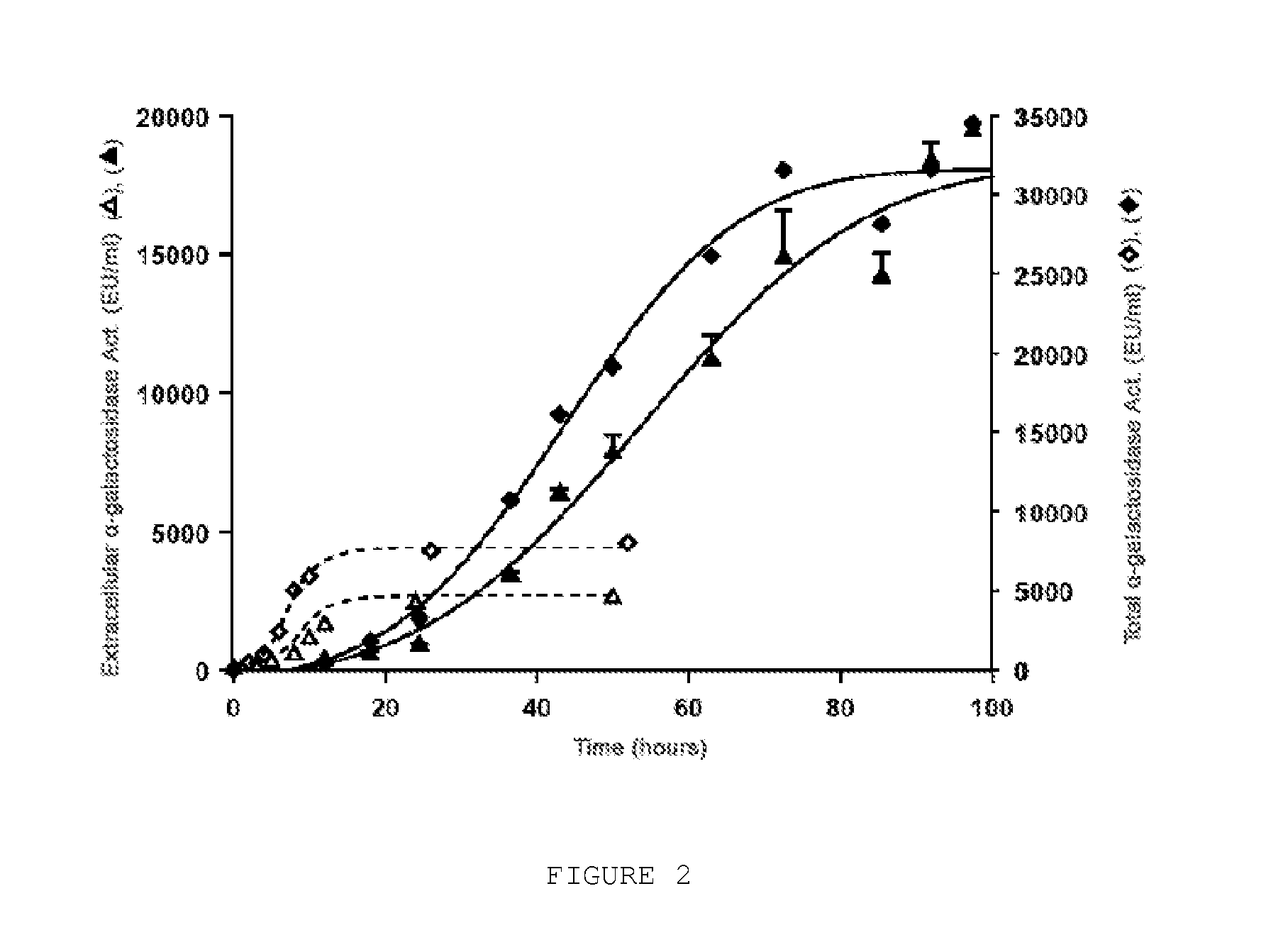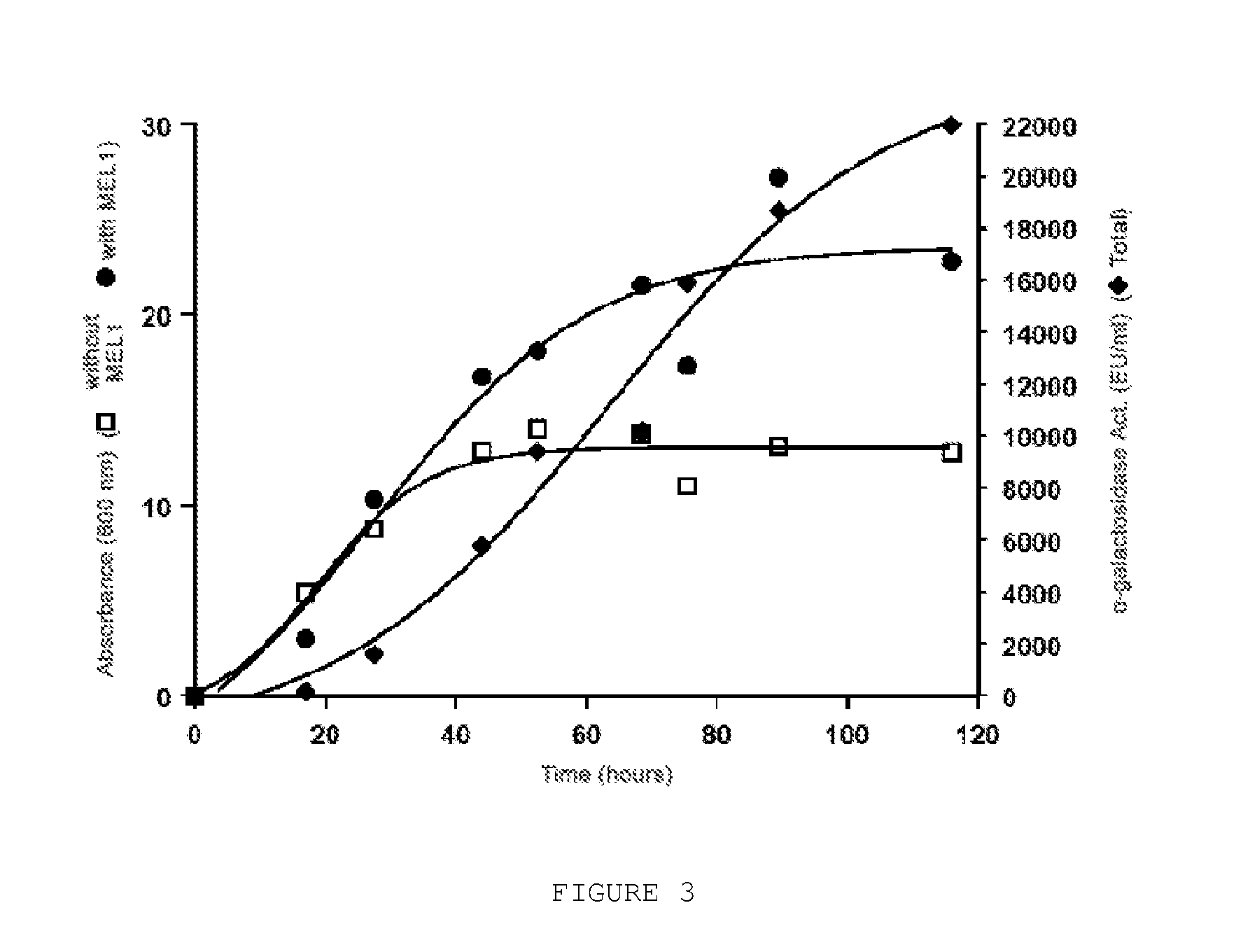Strains of s.cerevisiae capable of growing in media with melibiose, stachyose and raffinose
a technology of s.cerevisiae and media, applied in the field of s., can solve the problems of varying severity in sensitive individuals, production of unwanted by-products, and inability to be discarded directly, so as to maximize the exploitation of energy
- Summary
- Abstract
- Description
- Claims
- Application Information
AI Technical Summary
Benefits of technology
Problems solved by technology
Method used
Image
Examples
example 1
Obtaining the Modified Strain of Yeast to Produce α-Galactosidase
Materials and Methods:
[0089]1. Cloning the Nucleotide Sequence from the Gene Encoding α-Galactosidase
[0090]Two pairs of primers were designed for amplifying by PCR (Polymerase Chain Reaction) the MEL1 gene encoding the α-galactosidase of Saccharomyces cerevisiae. Two fragments were amplified, one of them corresponding to the complete gene of α-galactosidase (SEQ ID NO:4), amplified with the following primers, with SEQ ID NO:5 and SEQ ID NO:6 and the other fragment corresponding to the gene of the α-galactosidase in which the 54 nucleotides encoding the secretion signal (SEQ ID NO:7) were removed and amplified by the following primers, with sequences SEQ ID NO:8 and SEQ ID NO:9. The complete gene of the α-galactosidase was inserted into the vector YEpFLAG1 (Eastman Kodak Company Cat. No. IB13400) for expression in yeasts under the ADH2 (Alcohol Dehydrogenase 2) promoter (SEQ ID NO:1) and the transcription terminator of ...
example 2
Comparing the α-Galactosidase Activity of the Strain with MEL1 Under the ADH2 Promoter [A] and of a Strain with MEL1 Under the ADH1 Promoter [B]
[0099]The cloning details and the measurements of the α-galactosidase activity are described in Example 1. The culture of the recombinant strain [A] was carried out in a synthetic medium with 1% glucose.
[0100]FIG. 2 shows a comparison of the data obtained by the strain [B] described in U.S. Pat. No. 5,055,401 with the recombinant strain [A] of the invention. For that purpose, data have been extracted from FIGS. 7A and 7B of U.S. Pat. No. 5,055,401 and they have been compared. It can be observed that while a total α-galactosidase activity of 8000 E.U. / ml was reached at 36-54 hours in the strain described in U.S. Pat. No. 5,055,401, a total activity of 10000 E.U. / ml to 20000 E.U. / ml were obtained for the same time interval in strain [A] of the invention, achieving, as previously discussed, values of about 32000 E.U. / ml in the subsequent phases...
PUM
| Property | Measurement | Unit |
|---|---|---|
| dry weight | aaaaa | aaaaa |
| temperature | aaaaa | aaaaa |
| temperature | aaaaa | aaaaa |
Abstract
Description
Claims
Application Information
 Login to View More
Login to View More - R&D
- Intellectual Property
- Life Sciences
- Materials
- Tech Scout
- Unparalleled Data Quality
- Higher Quality Content
- 60% Fewer Hallucinations
Browse by: Latest US Patents, China's latest patents, Technical Efficacy Thesaurus, Application Domain, Technology Topic, Popular Technical Reports.
© 2025 PatSnap. All rights reserved.Legal|Privacy policy|Modern Slavery Act Transparency Statement|Sitemap|About US| Contact US: help@patsnap.com



